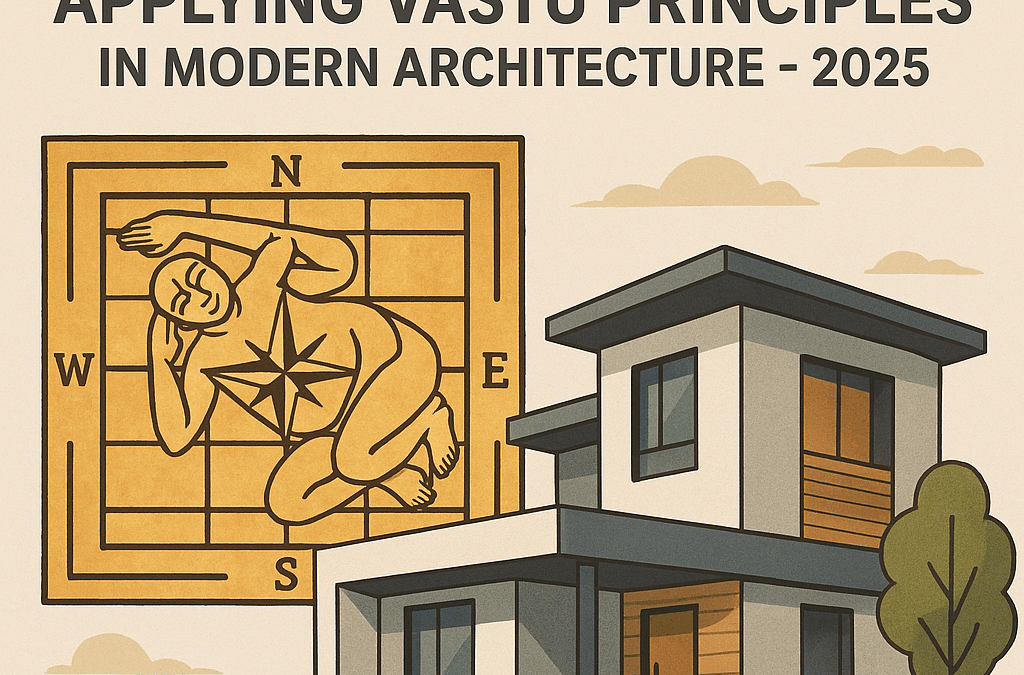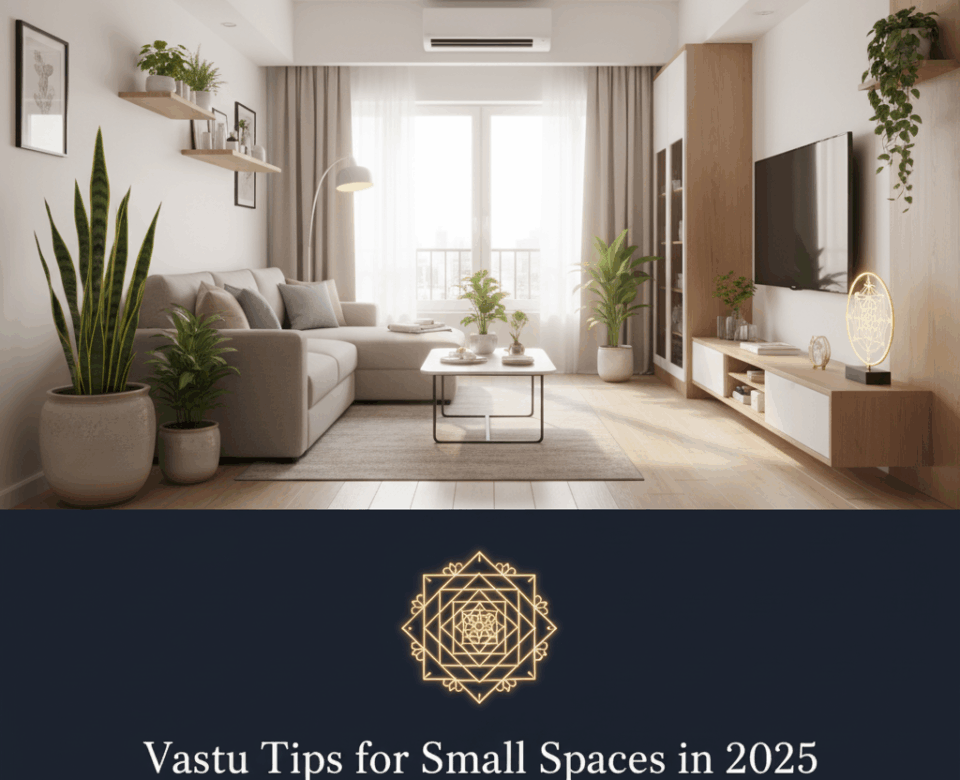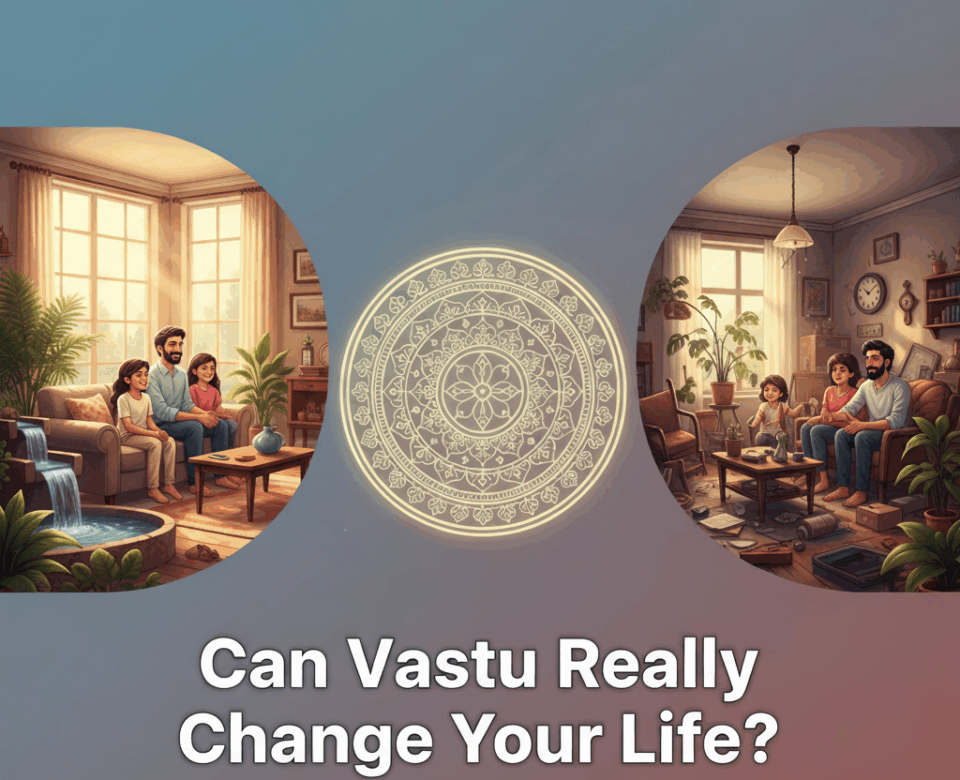
Kitchen According to Vastu: Creating a Harmonious Cooking Space
June 5, 2024
Integrating Vastu Shastra with 2025 Interior Design Trends in the USA
October 29, 2025Introduction:
Vastu Shastra, an ancient Indian science of architecture and design, offers a profound understanding of how to create spaces that promote well-being, prosperity, and harmony. While rooted in tradition, its core principles remain remarkably relevant in the context of modern architecture, offering a powerful framework for designing spaces that are not only aesthetically pleasing and functional but also resonate with positive energy. This article delves into the detailed application of Vastu principles in contemporary building design, exploring how this ancient wisdom can enrich our living and working environments.
The Essence of Vastu: Cosmic Energy and Directional Alignment
At its heart, Vastu Shastra is about optimizing the flow of cosmic energy (Prana or life force) within a structure. It posits that every direction is associated with specific energies and elemental influences, and by aligning our spaces with these energies, we can create environments that support human health, happiness, and success. The five elements – Earth, Water, Fire, Air, and Space – play a crucial role, with each direction corresponding to a particular element and its associated deity.
Key Vastu Principles and Their Modern Interpretations:
1. Directional Alignment and Orientation: The Foundation of Good Vastu
The most fundamental Vastu principle is the orientation of the building itself.
- North-East (Ishanya): Considered the most auspicious direction, governed by Water and ruled by Lord Shiva. It is ideal for meditation rooms, prayer rooms, and entrances. In modern design, this translates to maximizing natural light in north-east facing spaces, creating serene areas for contemplation or focus.
- East (Purva): Ruled by the Sun and associated with Fire. Ideal for living rooms, studies, and dining areas, promoting growth and new beginnings. Large windows allowing morning sun are beneficial here.
- South-East (Agneya): Governed by Fire and ruled by Agni (fire deity). Best for kitchens, electrical appliances, and power sources. Modern kitchens can be strategically placed in this zone to align with the fire element.
- South (Dakshina): Ruled by Yama (deity of death) and associated with Earth. Suitable for bedrooms (especially master bedrooms), storage, and heavy objects, promoting stability. Avoiding large openings or entrances in this direction is generally advised.
- South-West (Nairutya): Governed by Earth and ruled by Nairuti (a demoness). Ideal for master bedrooms and heavy storage, symbolizing strength and grounding. In modern homes, this can be a robust, secure part of the house.
- West (Paschima): Ruled by Varun (water deity) and associated with Water. Good for dining rooms, children’s bedrooms, and storage. Evening sun exposure can be managed with appropriate shading.
- North-West (Vayavya): Governed by Air and ruled by Vayu (wind deity). Suitable for guest bedrooms, living rooms, and transient spaces. Good ventilation is key here.
- North (Uttara): Ruled by Kubera (deity of wealth) and associated with Water. Ideal for entrances, living rooms, and studies, promoting financial prosperity. Entrances facing North are highly regarded.
Modern Application: Architects can utilize site analysis to optimize building orientation, considering solar paths for natural light and heat gain/loss, while also factoring in Vastu-preferred directions for key functions. This doesn’t mean rigidly adhering to every rule, but rather using them as a guide for intelligent zoning.
2. Plot Selection and Site Analysis: The Ground Beneath Our Feet
The shape, slope, and surroundings of a plot significantly impact its Vastu.
- Plot Shape: Square or rectangular plots are considered most auspicious. Irregular shapes can lead to imbalanced energy.
- Slope: A gentle slope towards the North or East is preferred, allowing positive energies to flow in.
- Surroundings: Avoid plots near cemeteries, hospitals, or under high-tension wires. Presence of water bodies in the North-East is considered highly beneficial.
Modern Application: Urban planning often presents limitations, but architects can still assess the energy flow of a site. Irregular plots can be “corrected” through landscaping or strategic internal divisions. Green spaces and water features can be incorporated to enhance positive energies.
3. Building Structure and Form: The Architectural Silhouette
The overall shape and massing of a building also fall under Vastu scrutiny.
- Symmetry and Balance: Vastu emphasizes balanced proportions and symmetry for harmonious energy flow.
- Open Spaces (Brahmasthan): The central part of any building (Brahmasthan) should ideally be kept open, uncluttered, and free from heavy structures or pillars, allowing cosmic energy to circulate freely.
- Extensions and Cuts: Avoid extensions in undesirable directions and cuts (missing corners) as they can create energetic imbalances.
Modern Application: Contemporary designs often favor open-plan living and clean lines, which can naturally align with Vastu’s emphasis on unobstructed central spaces. Modular construction techniques can also be adapted to ensure balanced forms.
4. Room Placement and Zoning: Functional Harmony
The placement of specific rooms within the building is a cornerstone of Vastu.
- Kitchen: South-East is ideal, ensuring the cook faces East while cooking. Alternatively, North-West is permissible. Avoid North-East and South-West.
- Bedrooms: South-West for the master bedroom, South or West for other family members. Avoid North-East. Sleeping with the head towards the South is considered beneficial.
- Living Room: North, East, or North-East are preferred for receiving guests and social interaction.
- Bathrooms and Toilets: North-West or South-East are generally acceptable. Avoid North-East and the center of the house.
- Study Room: East or North are ideal, promoting concentration and learning. The individual should face East or North while studying.
- Staircases: South or West are preferred. Avoid central staircases or those that spiral clockwise.
Modern Application: This aspect of Vastu offers a clear framework for space planning. Architects can subtly integrate these preferences into functional layouts, perhaps shifting a kitchen by a few feet or orienting a bed for optimal energy.
5. Colors, Materials, and Lighting: Enhancing the Energetic Palette
Vastu extends to the interior design, recognizing the impact of sensory elements.
- Colors: Each direction is associated with specific colors that enhance its energy. For example, light blue and green for North-East (water), pastels for East (air), and warm tones for South-East (fire). Avoid dark, oppressive colors in general.
- Materials: Natural materials like wood, stone, and brick are highly regarded for their grounding and authentic energy.
- Lighting: Abundant natural light is crucial for positive Vastu. Artificial lighting should mimic natural light cycles and create a warm, inviting atmosphere. Bright lights in the North and East are beneficial.
Modern Application: This aligns perfectly with sustainable design principles that prioritize natural light and ventilation. Material selection can be guided by both aesthetic and energetic considerations, using Vastu as an additional layer of thoughtful design.
6. Water Features and Landscaping: Nature’s Influence
The integration of water and greenery is vital in Vastu.
- Water Bodies: Fountains, aquariums, or swimming pools in the North-East are considered highly auspicious for wealth and prosperity.
- Plants: Specific plants are associated with positive energies. Tulsi (holy basil) in the North-East, and other auspicious plants can enhance the environment. Avoiding thorny plants indoors is advised.
- Slope and Drainage: Ensuring proper drainage away from the North-East and towards the South-West maintains positive energy flow.
Modern Application: Biophilic design, which integrates nature into architecture, finds a natural synergy with Vastu. Green roofs, vertical gardens, and strategically placed water features can fulfill both modern aesthetic desires and Vastu requirements.
Integrating Vastu into Modern Architectural Practice:
Applying Vastu in modern architecture is not about blind adherence to rigid rules, but about intelligent integration.
- Site-Specific Solutions: Vastu principles should be adapted to the specific site, climate, and local regulations.
- Flexibility and Balance: Not every Vastu rule can be perfectly applied in every project. Prioritize the most impactful principles (like orientation, Brahmasthan, and key room placements) and seek a harmonious balance.
- Holistic Design: Vastu encourages a holistic view of design, considering not just aesthetics and function, but also the energetic well-being of the occupants.
- Technological Integration: Modern technology can aid in Vastu-compliant design. Software can analyze sunlight, airflow, and even energetic zones within a digital model.
- Client Education: Architects can educate clients about the benefits of Vastu, helping them understand how these principles can enhance their living experience.
Conclusion: Designing for a Better Life
Vastu Shastra, when thoughtfully integrated into modern architectural practice, offers a powerful means to create spaces that transcend mere functionality. It provides a framework for designing buildings that are in harmony with natural energies, promoting health, prosperity, and peace for their inhabitants. By embracing this ancient wisdom, architects can craft environments that not only stand as testaments to innovative design but also serve as sanctuaries, enriching the lives of those who dwell within them. The future of architecture lies not just in what we build, but in how profoundly our creations can contribute to human well-being.





